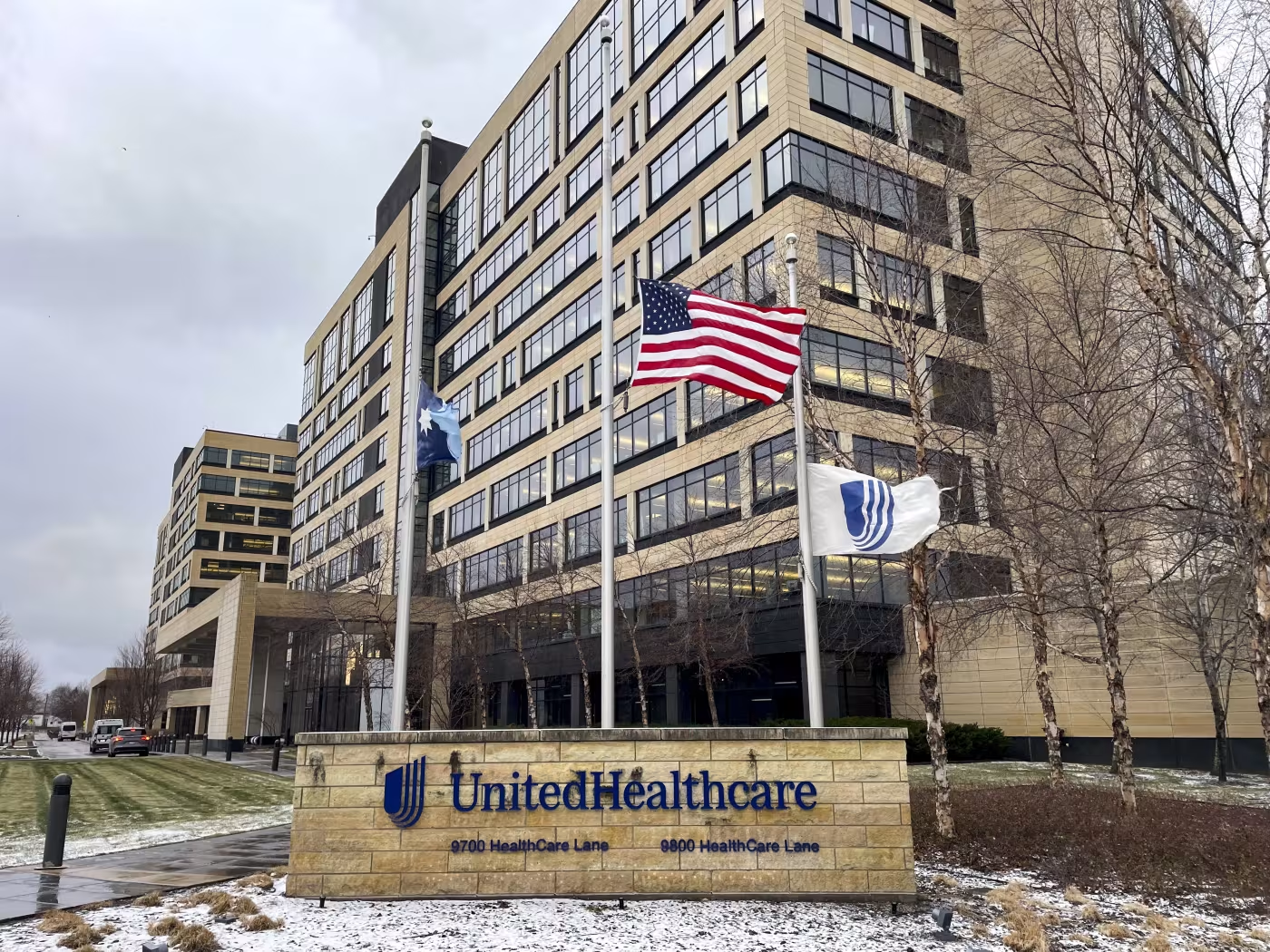Happy National Employee Benefits Day!

“National Employee Benefits Day is celebrated each year in April. The day recognizes trustees, administrators, benefits practitioners and professional advisors for their dedication to providing quality benefits and the important role they play in their colleagues’ well-being.”
From Washington, DC,
- The Wall Street Journal reports
- “Senate Republicans rallied behind a fiscal framework that allows more than $5 trillion in tax cuts over a decade, taking a crucial step toward turning President Trump’s agenda—tax cuts, border security and national defense—into law.
- “But the GOP budget resolution released Wednesday won’t be the final word along the complicated path to a major tax and spending bill. The plan employs a controversial accounting maneuver, postpones decisions about spending cuts and conflicts with a competing House plan.
- “The Senate is likely to vote on its budget later this week, but key House members are already objecting, warning that the Senate’s approach doesn’t guarantee the deep spending cuts they see as necessary.”
- Modern Healthcare adds,
- “The Senate Budget Committee unveiled a budget resolution Wednesday that could pave the way to less draconian cuts in health programs than House lawmakers previously proposed.
- “The Senate proposal includes the House’s earlier recommendations that could lead to billions in health program cuts — but it also includes instructions for the Senate to go a different route while renewing tax cuts passed during President Donald Trump’s first term. The upper chamber’s resolution would delay sorting out differences with the House.
- “The Senate’s budget resolution and negotiations with the lower chamber could provide for greater flexibility around healthcare cuts, which moderate Republicans in the House said they would not support if they were too steep. It also means the healthcare sector will have to wait to see what healthcare cuts — or spending — could be on tap until the Senate has done its work.”
- Per a news release, “Today, Health, Employment, Labor, and Pensions Subcommittee of the House Education and Labor Committee held a hearing titled “A Healthy Workforce: Expanding Access and Affordability in Employer-Sponsored Health Care.”
- Modern Healthcare points out,
- “The Health and Human Services Department is restructuring agencies that enforce regulation, handle claims disputes, and investigate potential civil rights violations as part of a department-wide reorganization.
- “A new assistant secretary for enforcement will oversee three parts of HHS — the Departmental Appeals Board, the Office of Medicare Hearings and Appeals and the Office of Civil Rights — as part of a sweeping overhaul announced last week. The new role raises questions about how HHS plans to handle billions of dollars in claims disputes and appeals resolutions, as well as how the offices will operate within the new structure. Healthcare attorneys are also watching for how HHS handles the operational elements of the reorganization, including staffing decisions and the chain of command at the affected offices.”
- Fierce Healthcare lets us know,
- “President Donald Trump made good on his threat of announcing new and steeper tariffs during a Wednesday afternoon White House event, setting the stage for higher prices and supply chain uncertainty for numerous industries including healthcare.
- “The tariffs, set to go into effect at midnight, are the largest trade policy shift for the U.S. in decades and an end to the so-called free-trade era. They include a minimum 10% tariff that affects “all countries,” according to the White House.
- “Additionally, a slew of higher, individualized reciprocal tariffs will go into effect for dozens of countries with which the U.S. has a large trade deficit, the White House said. These are broadly designed to be around half of those imposed by most trade partners, including longtime allies.
- “A 39% European Union tariff rate, for instance, will be matched by a 20% rate, the president explained. A 67% tariff imposed by China will see a reciprocal 34% tariff from the U.S.
- “Pharmaceuticals are among a select list of goods that will not be subject to the higher reciprocal tariffs, according to a fact sheet released shortly after the signing ceremony and affirmed in the signed executive order.
- “The president also signed an order to close the “de minimis loophole,” a trade policy signed into law by Congress that allows shipments valued at less than $800 to be duty-free, for Chinese imports.”
- Healthcare Dive points out,
- “Enrollment in the Affordable Care Act marketplaces reached a new high in 2025, boosted by growth in states won by President Donald Trump in last year’s election, according to a research brief by KFF.
- “Sign-ups in the insurance marketplaces have more than doubled over the past five years, increasing from 11.4 million in 2020 to 24.3 million in 2025, the health policy research firm said Wednesday.
- “Much of the growth is linked to more generous federal financial assistance for the health plans first made available in 2021, according to KFF. But those enhanced premium subsidies are set to expire at the end of the year absent congressional action.”
- The Wall Street Journal relates,
- “Federal drug regulators have missed the deadline for making a key decision regarding a Covid-19 vaccine from Novavax, days after the Food and Drug Administration’s vaccine chief was pushed out.
- “The agency was set to give full approval to Novavax’s shot, but senior leaders at the agency are now sitting on the decision and have said the Novavax application needed more data and was unlikely to be approved soon, people familiar with the matter said.
- ‘The FDA has allowed emergency use of Novavax’s Covid-19 vaccine. It set an April 1 deadline for a decision on whether to grant a normal, full approval, the people said.
- “The decision would have cleared the vaccine’s continuing use though the pandemic emergency has passed. The FDA gave full approval to Covid-19 shots from Pfizer and its partner BioNTech and from Moderna in 2021 and 2022, respectively.
- “Novavax said it is “continuing to communicate with the FDA and dialogue to ensure they have all the information required to complete our” application.
- “A Health and Human Services Department spokesman declined to comment. The FDA didn’t immediately respond to requests for comment.”
From the judicial front,
- STAT News tells us,
- “The Supreme Court on Wednesday ruled for the Food and Drug Administration in its crackdown on sweet-flavored vaping products following a surge in teen electronic cigarette use.
- “But the justices’ unanimous decision throwing out a federal appeals court ruling is not the final word in the case, and the FDA could change its approach now that President Donald Trump has promised to “save” vaping.”
- Bloomberg Law reports,
- “Portions of a Tennessee law aimed at increasing pharmacy access are preempted by the federal employee benefits statute and can’t be enforced against certain self-funded employer health plans, a federal judge ruled.
- “The law’s “any-willing-provider” requirement—which limits a plan’s ability to exclude pharmacies from its network—has an “impermissible connection” with benefit plans governed by the Employee Retirement Income Security Act, Judge Charles E. Atchley Jr. said Monday for the US District Court for the Eastern District of Tennessee. That’s because it dictates the scope of provider networks eliminates plans’ “discretion to shape benefits as they see fit,” he said.
- “ERISA also preempts the Tennessee law’s prohibition on using financial incentives to promote or discourage use of a particular pharmacy, Atchley said, explaining that the law prevents ERISA-governed plans from “designing and providing benefits in a way that the plan determines best serves participants.”
- “The decision is a victory for commercial bakery McKee Foods Corp., which initially filed suit to counter a campaign by defendant Thrifty Med Plus Pharmacy to be reinstated in the pharmacy network for McKee’s employee health plan.” * * *
- “The case is McKee Foods Corp. v. BFP Inc., E.D. Tenn., No. 1:21-cv-00279, 3/31/25.”
- The Wall Street Journal reports,
- “The Federal Trade Commission’s [internal] lawsuit against three large pharmacy-benefit managers over insulin prices is on hold after President Trump fired two of the agency’s commissioners.
- “The FTC this week halted a lawsuit against the country’s largest drug middlemen, which negotiate drug prices for employers and insurers. The FTC said it needs to pause the litigation because its two remaining commissioners, both Republicans, are recused from the case, leaving none to oversee it.
- “The antitrust enforcer in September 2024 sued Cigna’s Express Scripts, UnitedHealth Group’s Optum Rx and CVS Health’s CVS Caremark, accusing the firms of inflating the price of insulin. The lawsuit said firms profited by pocketing the discounts they had negotiated for the higher-priced insulin products they steered their customers to buy.
- The FTC said in a court filing that the companies had agreed to put the case on hold for at least 105 days.”
From the public health and medical research front,
- The AHA News informs us,
- “A National Institutes of Health study published today found that blood pressure patterns observed during the first half of pregnancy can determine a woman’s risk of developing hypertension up to 14 years after giving birth. The study found that women showing certain blood pressure patterns during the first 20 weeks of pregnancy were more likely to develop hypertension years later. Researchers identified six risk groups of blood pressure trajectory that ranged from ultra-low to elevated-stable patterns. Women with elevated-stable patterns were at the highest risk.”
- “A National Institutes of Health study published today found that blood pressure patterns observed during the first half of pregnancy can determine a woman’s risk of developing hypertension up to 14 years after giving birth. The study found that women showing certain blood pressure patterns during the first 20 weeks of pregnancy were more likely to develop hypertension years later. Researchers identified six risk groups of blood pressure trajectory that ranged from ultra-low to elevated-stable patterns. Women with elevated-stable patterns were at the highest risk.”
- Per Beckers Hospital Review,
- “Lung cancer screening more than tripled after the U.S. Preventive Services Task Force expanded screening eligibility in 2021, according to a March 20 research letter published in JAMA Oncology.” * * *
- “Read the full analysis here.”
- Nevertheless, MedPage Today cautions,
- “Among eligible populations, screening for breast and colorectal cancers was nearly four times more common than for lung cancer.
- “Among those who never had lung cancer screening, roughly 60% had undergone screening for breast and colorectal cancers.
- “The findings suggest individuals eligible for low-dose CT screening may be receptive to efforts aimed at increasing uptake.”
- Per Medscape,
- “Two recent studies have added to the growing body of research suggesting consuming more dairy reduces a person’s risk of getting colorectal cancer.
- “A prospective cohort study in Nature Communications published in January looked at the incidence of colorectal cancer (CRC) in more than 540,000 UK women over 16 years and found a 14% reduced risk for the cancer for every 200 g of dairy milk consumed per day. It also found an 8% reduced risk per 50 g of yogurt per day.
- “The other study, from GutMicrobes, also published in January, looked specifically at yogurt intake with a focus on Bifidobacterium, a bacteria commonly found in yogurt. The researchers found that people who had at least two servings per week of yogurt had a 20% lower risk for Bifidobacterium-positive tumors than those who had less than one serving per month of yogurt, “suggesting the antitumor effect of yogurt intake on the specific tumor subgroup.”
From the U.S. healthcare business front,
- Modern Healthcare reports,
- “Jobs in the health insurance industry fell last year, something that hasn’t happened since 2009 and bucked an uptick in overall employment.
- “It is a turning point for the industry, after years of profit growth and strategic expansions into pharmacy and provider businesses that increased headcount. Some of the largest publicly traded insurers reported steep workforce declines, according to a Modern Healthcare analysis of regulatory filings.
- “Elevance Health, Humana, UnitedHealth Group and Centene cut their workforces, with the biggest reductions coming from the latter two companies. CVS Health and Molina Healthcare kept their workforce steady. Cigna grew its headcount nearly 1.4%.
- “Across the seven companies, employment dipped 4.6% in 2024. Moreover, when not accounting for UnitedHealth Group, which reported a major reduction overseas, staffing among the other six still slipped 1.4%. National employment across all industries grew 1.2% last year, according to the Bureau of Labor Statistics.
- “It was such a growth story for many years, and that’s tapered a little bit,” said Judy Busby, senior vice president and managing director of insurance staffing company The Jacobson Group.”
- Per Beckers Hospital Review,
- “Nonradiologists interpreted 43.6% of office-based imaging studies in 2022, according to a study published April 2 in the American Journal of Roentgenology.
- “Researchers from the Harvey L. Neiman Health Policy Institute analyzed more than 1.6 million Medicare physician office-based imaging claims ordered by nonradiologists. They found that just 36.4% of the studies were interpreted by a radiologist.” * * *
- “For imaging type, nonradiologists interpreted 52% of ultrasound images, 5.3% of CT scans and 6.1% of MRIs. Smaller practices — those with one to nine providers — had a higher rate of self-interpretation than practices with 500 or more physicians.”Our results raise potential implications for quality of patient care,” Vijay Rao, MD, senior vice president of enterprise radiology at Philadelphia-based Jefferson Health and one of the study’s authors, said in a news release. “The large differences between radiologists and nonradiologists in interpretation training could lead to differences in diagnostic accuracy.”
- Per MedTech Dive,
- “Artis BioSolutions emerged from stealth Wednesday, announcing that it has acquired Landmark Bio, an alliance of academic institutions, hospitals and biotech companies founded in 2021 to help turn research ideas into broadly available genetic medicines.
- “Landmark will continue to operate as a distinct entity, based in Watertown, Massachusetts. The acquisition by Artis BioSolutions will allow Landmark to scale up operations and “bring breakthrough therapies to more patients” Landmark CEO Ran Zheng said in a statement.
- “Artis BioSolutions, backed by the venture capital firm Oak HC/FT, is now well positioned as a contract development and manufacturing organization for advanced therapies, the company said Wednesday. Artis BioSolutions said it can help customers speed up timelines, lower manufacturing costs and improve both product quality and supply chain management.”
- The Wall Street Journal reports,
- “Hims & Hers’s addition of obesity drug Zepbound won’t do much to bolster its weight-loss business, analysts say.
- “Hims & Hers has been selling a compound GLP-1 for around $165 a month but will now offer the brand-name Zepbound for around $1,900 a month. Investors worry patients won’t make that price leap and that Hims, which has built its business on affordable healthcare, will struggle to meet its revenue goal.
- “It’s probably unlikely that a compounded GLP-1 customer at Hims that’s paying $165 per month is going to transition to paying $1,900 per month for the fully branded,” Needham analyst Ryan MacDonald said. “There’s a question about how achievable the weight-loss revenue guidance is for 2025.”







